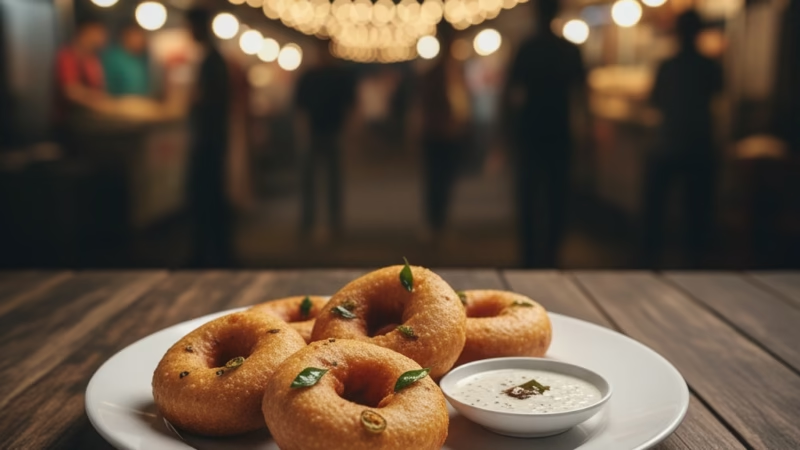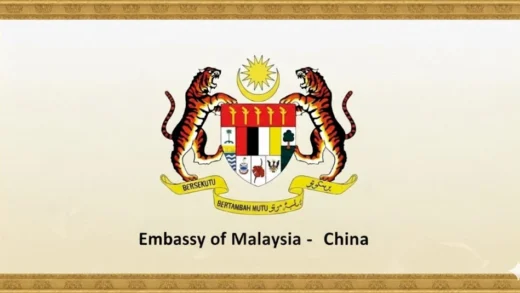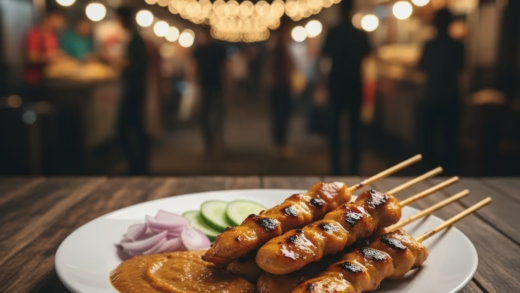Vadai

Malaysian Food
Vadai (also spelled vadai, vada, or medu vada) is a traditional South Indian and Sri Lankan savory fritter made from lentils.
Origin
South India (Tamil Nadu, Kerala, Karnataka, Andhra Pradesh) and Sri Lanka.
Category
Snack / Breakfast / Street Food / Tea-time snack.
Appearance
Golden-brown, doughnut-shaped fritters; crispy outside, soft inside; may also appear round or flat depending on the type.
Ingredients
- Urad dal (black gram lentils) or chana dal (split chickpeas)
- Onion
- Green chilies
- Curry leaves
- Ginger
- Black pepper
- Salt
- Water
- Oil for deep frying
Optional: grated coconut, cumin seeds, or other spices.
Preparation
- Soak lentils for several hours.
- Grind into a smooth batter.
- Mix in onions, chilies, curry leaves, ginger, and spices.
- Shape into rounds or doughnut forms.
- Deep fry until golden and crispy.
Equipment
- Mixing bowls
- Grinder or food processor
- Deep frying pan / wok
- Slotted spoon
Variations
- Medu Vadai: Classic doughnut shape, soft interior.
- Masala Vadai: Chunky, flat, spiced lentil fritter.
- Paruppu Vadai: Kerala version made from chana dal.
- Vegetable Vadai: Includes cabbage, spinach, or carrots.
Taste
Savory, slightly spicy, nutty, and earthy from lentils.
Texture
Crispy on the outside; soft and fluffy inside (Medu vadai), or crunchy throughout (Masala vadai).
Aroma
Fried lentils with hints of curry leaves, ginger, and spices.
Sound
Sizzle during frying; crisp crunch when bitten.
Cultural Significance
Popular breakfast, tea-time snack, and festival food in South India and Sri Lanka. Often offered in temples and during celebrations.
Symbolism
Represents traditional culinary heritage and festive occasions.
Regional Cuisine
- Tamil Nadu: Medu vadai
- Kerala: Parippu vada with sambar
- Karnataka & Andhra Pradesh: Masala vadai
Social Context
Common street food and homemade snack. Served with chutneys or sambar, especially during festivals.
Nutritional Information (per 50g piece)
- Calories: 120–150 kcal
- Protein: 4–5 g
- Carbohydrates: 15 g
- Fat: 5–8 g
- Fiber: 2 g
Health Benefits
- Good source of plant-based protein
- Contains fiber and essential minerals
Dietary Restrictions
- Vegetarian-friendly
- Gluten-free if prepared with lentils only
Allergens
- Legumes (urad dal / chana dal)
- Oil (depending on frying medium)
Cost
- Street price in India: ₹10–₹30 per piece
- Homemade cost varies with lentil prices
Production
Made fresh daily in homes or sold as street food; frozen versions are also available commercially.
Sustainability
Lentils are environmentally friendly; vadai is a low-impact snack compared to animal-based options.
Availability
Widely available in South Indian restaurants, street stalls, and during festivals.
History
Centuries-old South Indian breakfast item. Documented in traditional Tamil and Kerala cuisine.
Anecdotes
- Served at weddings and temple feasts
- Morning coffee or evening tea snack favorite
How to Prepare
- Soak lentils for 4–6 hours.
- Grind into smooth batter.
- Mix in onions, chilies, curry leaves, and spices.
- Shape into rounds or doughnut forms.
- Heat oil and deep fry until golden brown.
- Serve hot with chutney or sambar.
FAQ
Q: Can vadai be baked instead of fried?
A: Yes, but crispiness may reduce.
Q: How long does it stay fresh?
A: Best eaten fresh; can last 1 day in an airtight container.
Q: Is it gluten-free?
A: Traditional vadai made with lentils only is naturally gluten-free.





Comments are closed.